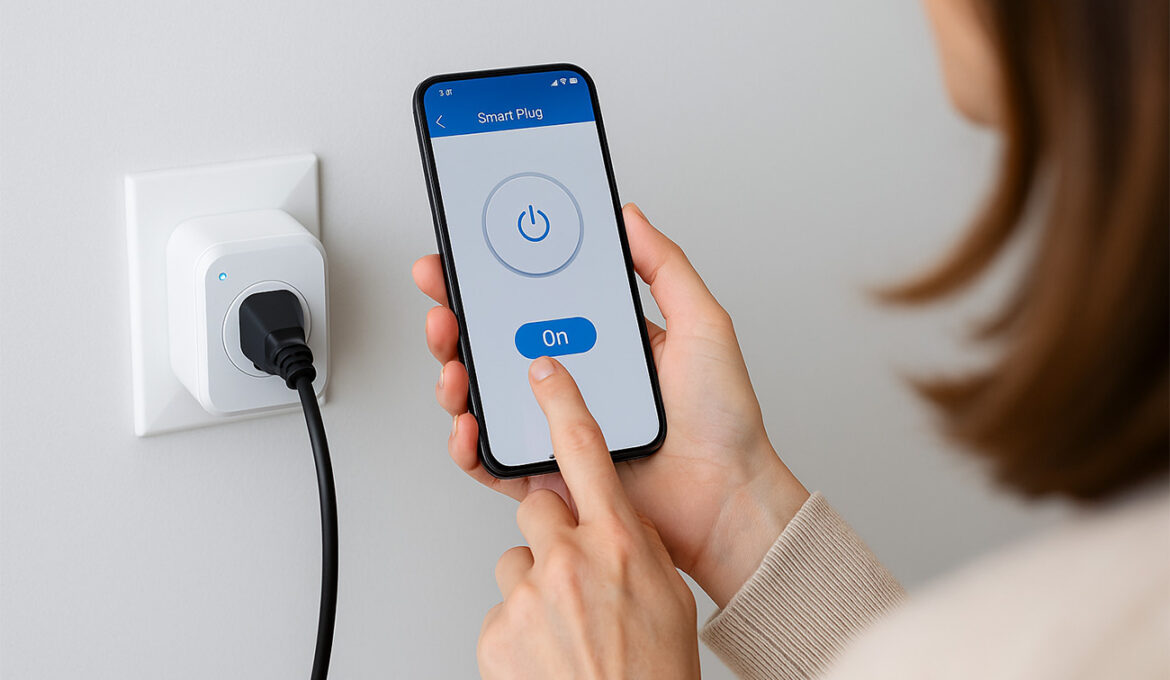When building the ideal smart home, it’s easy to focus on the flashy stuff—smart speakers, displays, even robot vacuums. But what about the perfectly good devices we already own? No one wants to toss a working kettle or trusty old toaster just because they lack Wi-Fi. That’s where smart plugs shine. These handy little adaptors plug into your wall sockets and connect to Wi-Fi, instantly giving “dumb” devices a smart upgrade.
Whether it’s scheduling your coffee machine or switching off your straighteners from across town, smart plugs add serious convenience. They can also help save energy, track consumption, and trim your electricity bill.
In this guide, I’ll cover what smart plugs are, the key features to look for, and which models stand out in the UK right now.
What Are Smart Plugs and How Do They Work?
Smart plugs let you control power to an appliance remotely. They slot between your wall socket and device, enabling you to turn it on or off via an app or voice assistant. Most connect to your home Wi-Fi, though some support Bluetooth or newer protocols like Matter and Thread for more reliable, responsive setups.
Key Benefits of Smart Plugs
- Remote Control: Power devices on or off from anywhere using your phone.
- Scheduling & Timers: Automate routines and reduce energy waste.
- Voice Control: Hands-free control via Alexa, Google Assistant, or Siri.
- Energy Monitoring: Track usage, see costs, and spot energy-hungry devices.
- Away Mode: Simulate presence by turning lights or devices on/off at random.
- Group Control & Sharing: Manage multiple devices at once or share control with family.
What to Look For
- Connectivity: Wi-Fi is common, but Zigbee and Thread offer better range and stability (though they may need a hub).
- Ecosystem Compatibility: Make sure the plug works with your setup—Alexa, Google Home, Apple HomeKit, etc. Matter support is a big plus.
- Energy Monitoring: Ideal if you’re tracking electricity costs.
- Size & Design: Compact plugs won’t block other sockets.
- Safety Features: Look for flame-retardant materials and overload protection.
- Load Capacity: Check the wattage limit; not all plugs can handle high-powered appliances.
- Hub Requirement: Some plugs need a hub (especially Zigbee/Thread-based ones).
- Power Strips vs. Single Plugs: For multiple devices, smart strips can be more efficient.
Best Smart Plugs in the UK
Best Overall: TP-Link Tapo P110M
A brilliant all-rounder with Matter support, robust energy monitoring, a compact design, and no hub required. Works with Alexa, Google Assistant, and Apple HomeKit. Its only minor downside: the manual switch is on the side.
Best Budget Option: TP-Link Tapo P100
Under £10 and still reliable. You get remote control, scheduling, and Alexa/Google voice support—but no energy monitoring or HomeKit compatibility.
Best for Matter/Thread: Eve Energy UK
Top-tier for Apple Home users. Supports Matter and Thread for stable connectivity and privacy-focused local control. Monitors energy and integrates seamlessly with Siri. It’s pricier and bulkier, though, and Android users may find limitations.
Best for Alexa Users: Amazon Smart Plug
If you’re deep into Alexa, this is the plug to get. Effortless setup and native integration with Alexa routines. No energy monitoring, and it doesn’t work with other ecosystems.
Best for Hue Users: Philips Hue Smart Plug
Perfect for those already in the Hue ecosystem. Works with Alexa, Google Assistant, and HomeKit (via Hue Bridge). Bluetooth support makes setup easy, but full functionality requires the Hue Bridge—and there’s no energy monitoring.
Best Power Strip: Meross Smart Power Strip
Features four independently controlled sockets and four grouped USB ports. Compatible with all major ecosystems and needs no hub. There’s no energy tracking, and the unit is bulkier than standard strips.
Best Outdoor Plug: Meross IP44 Outdoor Plug
Designed for garden use, with water-resistant housing and two protected sockets. Works with all major ecosystems. Wi-Fi strength and weather protection need consideration, but it’s a reliable outdoor option.
Best for Tight Spaces: 4Lite WiZ Smart Plug
Tiny and discreet, with energy monitoring, app control, and support for Alexa and Google Assistant. It’s budget-friendly but can be fiddly to set up and makes an audible click when switching.
How to Set Up a Smart Plug
- Plug it in and wait for the LED to flash.
- Download the app (Tapo, Meross, etc.).
- Connect to Wi-Fi—most plugs use 2.4GHz networks only.
- Add your device in the app and name it.
- Link it to a voice assistant like Alexa, Google, or HomeKit.
- Start using routines, schedules, and remote control.
Troubleshooting Tips
- Not responding? Check the app first; re-add the device if needed.
- Frozen plug? Unplug and plug it back in. Factory reset if that fails.
- Wi-Fi issues? Ensure it’s on 2.4GHz and that signal strength is good near the plug.
Smart plugs are one of the easiest, most affordable ways to upgrade your home. Whether you’re automating lights, cutting energy costs, or just want peace of mind when you leave the house, they’re an essential part of any smart setup.
For most UK homes, the Tapo P110M is the go-to pick—it’s affordable, compact, and packed with features. If you’re in the Alexa camp, the Amazon Smart Plug is a no-fuss option. And for Apple enthusiasts, Eve Energy delivers premium performance and future-proofing. No matter your setup, a smart plug is a smart move.
